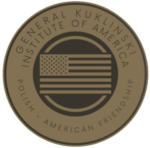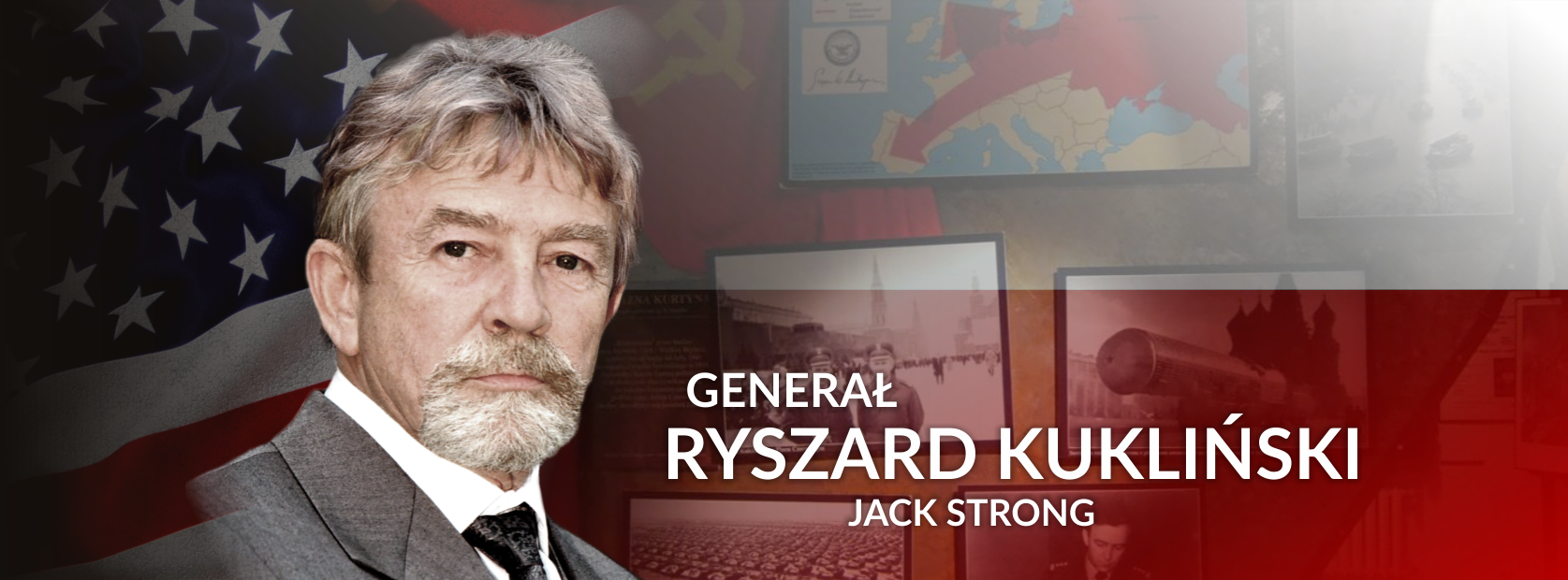By the end of World War II, the Red Army is pursuing the Nazis through Polish territory. It reaches Berlin, but no longer retreats. The Western powers hand over Central and Eastern Europe to Moscow. The totalitarianism of the German Third Reich is replaced by Russian communist totalitarianism. The borders of the USSR move westward by hundreds of miles, at the expense of Polish territory. The growing conflict between East and West initiates the Cold War, which will not end until 1991, with the collapse of the Soviet Union. These 45 years mark the most perilous period in the history of the world and mankind.
The Yalta deal
The Cold War originated at Yalta and began with Poland – this is a historical fact. The conflict between East and West, between the US and the USSR, began in 1945 with a dispute over control of Poland and effectively all of Central and Eastern Europe. The victory of democratic forces over the communist totalitarianism of the Polish People’s Republic, followed by the so-called Fall of Nations in 1989, marked the end, conventionally speaking, of the Cold War, which in its essence was a great global conflict both politically and militarily. Between 1944 and 1990, it was not Poland, being part of the Eastern Bloc, that stood at the political forefront, but Germany, divided literally and figuratively in half by the seemingly symbolic yet very real Berlin Wall. With the Iron Curtain being dropped outside the Polish People’s Republic, the outermost divisions of the West (NATO) and the East (Warsaw Pact, i.e. the USSR) faced each other in Germany, Czechoslovakia, even Hungary, only to be followed by the so-called Northern Group of Soviet Forces on Polish territory.
The term “Yalta” has become synonymous with the concept of the Pax Sovietica for both Europe and even the world. Since its inception in February 1945, Yalta has functioned in politics and history as a kind of stereotype, a figurative symbol of subordination to the Kremlin.
The Yalta Conference saw the division of Europe into spheres of influence, with Poland being an essential part of the Eastern Bloc. Nevertheless, formally, under international law, nothing of the sort took place, albeit the US and Great Britain de facto recognized the imperial power of Soviet Russia, just as they once had to recognize the imperialism of Tsarist Russia. Naturally, this was dictated by circumstances. Yet, it cannot remain unnoticed that while Roosevelt and Churchill were making concessions to Stalin at the former tsar’s summer palace in Livadia near Yalta, armored tank convoys bearing the red star were at the same time stationed just over the Oder River about 60 miles from Berlin, with all of Poland behind them.
Everything that occurred in Europe after the Yalta Conference (instead of parliamentary democracy in the countries allied with the Soviets, the communist coup in Czechoslovakia in 1948, the communist dictatorship in Poland, Russia’s attempted armed control of Greece in 1946-1949, Stalin’s threat to Yugoslavia) illustrated to the West the threat of Soviet control over all of Western Europe.
The beginning of the conflict
Less than a year after the end of the war, on February 9, 1946, Stalin gave a speech that was considered by some analysts to herald a new war. Several days later, on February 22, American embassy counselor in Moscow George F. Kennan sent an 8,000-word telegram to Washington that went down in history as the “long telegram.” Kennan stated that the Kremlin saw the world as divided into two camps (socialist and capitalist), between which peaceful coexistence was impossible. The effective disintegration of the grand coalition, the multiplying conflicts with the USSR were not the result of an inability to reason with Stalin, but a consequence of the ideological tenets of Soviet policy. Concessions and compromises would lead nowhere, as the Kremlin’s goal was not to agree, but to fight.
The salvation for Europe came with the presidency of Harry Truman in the US and his re-election to office in 1948. The so-called Truman Doctrine – the principle of providing armed assistance by the US military to countries under threat of communist aggression – arguably saved Western Europe from communism and dependence on Moscow as early as 1945-1950. The threat of Soviet aggression over the West prompted those countries in Europe that saved themselves from the fate of becoming the “people’s democracies” in 1945-1946 to unite in an alliance of the remnants of the democratic – not yet “people’s” – forces of Europe.
Building the Eastern Bloc
Soviet troops were stationed and controlled all territories east of the Iron Curtain. Terror was used against opponents of Russian domination, while national elites were eliminated, killed, degraded or forced to emigrate. Over time, the Soviet army transferred some of its power to subordinate security services and local governments. All of these were founded or co-founded by communists who felt they were members of a universal community controlled from Moscow. To gain legitimacy for their rule, communists in subordinate countries, under pressure from the Russians, staged referendums and elections, fabricating their results.
Revolutionary reforms were carried out everywhere: private property was confiscated, factories, banks, enterprises were nationalized, land ownership was abolished. The USSR monopolized the intermediation of trade relations of its subordinate countries with the West. A case in point was the issue of Polish coal supplies, desperately required by a devastated Europe. An agreement forced on Poland by the USSR to supply it with coal at special prices hindered the deal. Soviet totalitarianism even dominated culture and architecture, and suppressed the Catholic Church. The Soviets operated a system of gulags, forcing people into slave labor. Among them were enemies of communism deported from Poland to Siberia. Thousands of soldiers of the former Home Army, forces of the legal Polish government, chose to resist the Soviets. Despite no hope of aid from the West, their struggle continued until 1963. Collectively, they made history of post-war resistance to Moscow’s totalitarianism, forming the units of the so-called Cursed Soldiers.
Resistance against Moscow was also evident in other parts of Europe. In March 1945, the Soviet Union made territorial demands on Turkey, but the British-American response halted the expansion. In Greece, fighting between government troops and communist guerrillas trained and supported by USSR Yugoslavia and Albania continued until 1949. Greek independence was saved with the support of British and US troops.
Growing tensions
Tensions with the West continued to rise, with Moscow requiring large armies of its satellite states to be used for its own imperial purposes. The Polish People’s Army soon became the second largest force within the Eastern Bloc. In 1949, the USSR developed its own first atomic bomb. Meanwhile, on April 4, 1949, during negotiations in Washington under the presidency of Harry Truman, Belgium, Denmark, France, the Netherlands, Iceland, Canada, Luxembourg, Norway, Portugal, the United Kingdom, Italy and the US (Sweden, hoping to curry favor with Moscow, shunned participation in Europe’s defense system) concluded an alliance guaranteeing joint repulsion of an attack by the USSR. Greece and Turkey joined NATO in 1952, followed by Germany in 1955. The latter event worried Moscow to the point that a possible Soviet tank raid into the Atlantic would henceforth have to penetrate German resistance.
Between November 29 and December 2, 1954, Moscow ordered a meeting of delegations representing the governments of the seven satellite states to jointly plan and execute what was called “defense” in Soviet newspeak, but which was effectively a potential Soviet all-out attack on the West across Europe. On May 14, 1955, to Poland’s disgrace, a military treaty known as the Warsaw Pact was concluded.
World on the brink
The same mechanism was employed wherever Moscow tried to gain influence and control over states. Guerrilla groups, well-armed and trained by the USSR, seized power by force and propaganda under the slogans of freedom, then introduced the Soviet terror apparatus, followed by economic exploitation for the benefit of the USSR. Such was the case in East Asia, Europe and Africa.
By the late 1950s, communism was no longer just a problem in Europe and Asia. The Soviet-directed revolution was reaching the borders of the United States. On February 16, 1959, Fidel Castro forcibly seized power in Cuba with the help of Marxist guerrilla Ernesto Che Guevara. He formed an alliance with Moscow, but over time the Soviets began to dominate mutual relations and make Cuba economically and militarily dependent.
A year after Washington broke off diplomatic relations with Havana in 1961, the USSR began building top-secret launchers in Cuba for missiles reaching the US. Transport ships from the USSR with missiles and nuclear warheads were sent to Cuba. As a result of Moscow’s imperialist appetites, the world stood on the brink of nuclear war.


